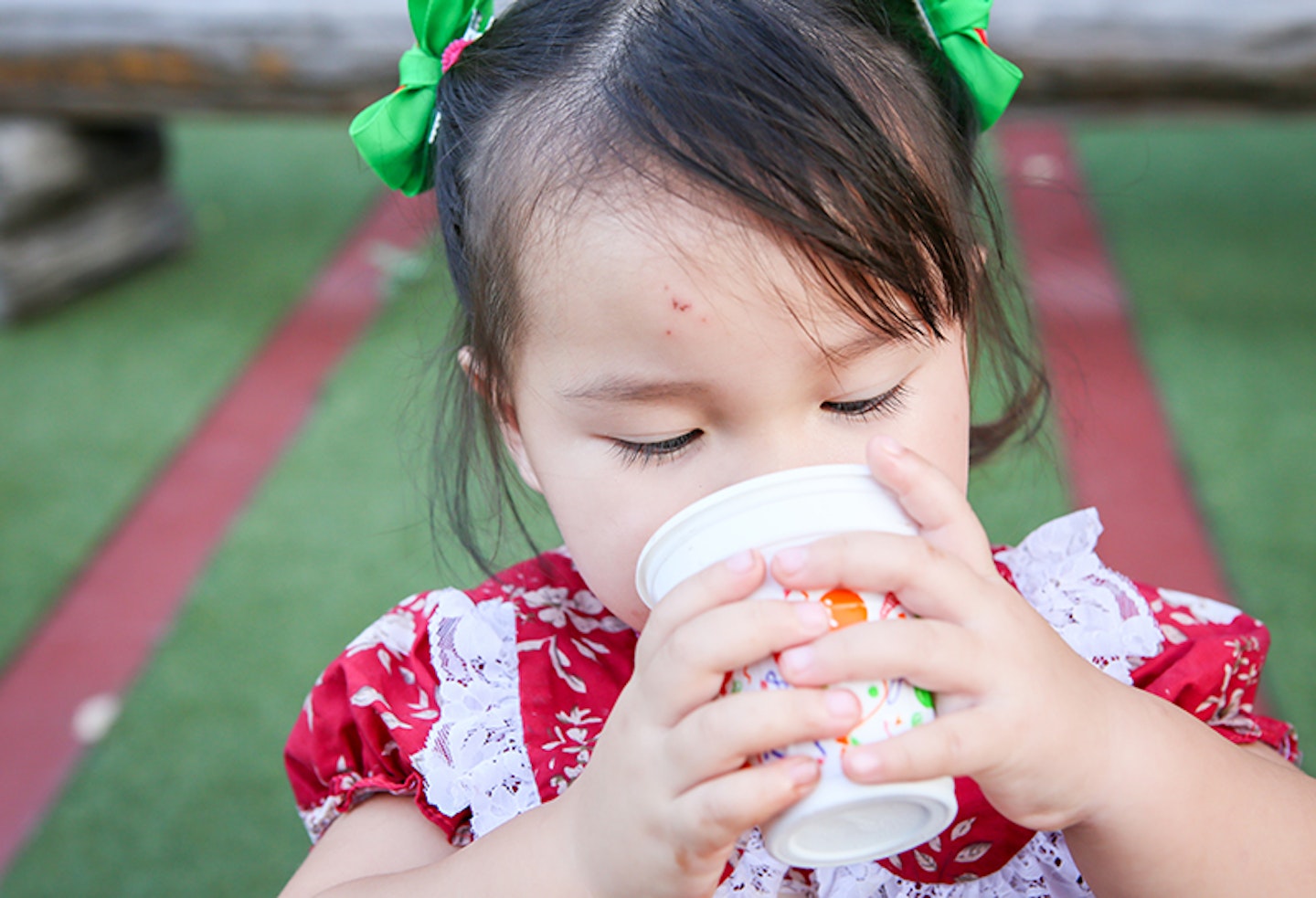For many mums, milk and how and when it is consumed is our overriding thought for the first few months of your baby’s life. And then, just when you become secure in your baby’s feeding routine, it’s time to consider weaning! While milk continues to be a huge part of your baby’s diet as you begin to wean, after a while, milk feeds may drop off.
How much milk should I give my 6-12 month old during weaning?
Your baby will still be getting the bulk of their fuel and nutrients from milk feeds during this time. It’s recommended you offer a weaning baby little tastes of food before their milk feeds but try to time this before he’s really hungry!
How much milk should a 1-year-old drink?
While World Health Organisation guidelines suggest breastfed babies should continue with breast milk until age 2, some parents decide to switch to cow’s milk as a drink when their babies reach 1.
Full fat cow’s milk is recommended at this age and the NHS recommends giving your child at least 350ml (12oz) of milk a day, or 2 servings of foods made from milk, such as cheese, yoghurt or fromage frais.
Should I offer a cup?

Like many aspects of weaning, some babies respond more clearly than others – while it is important that babies and toddlers do move on from bottles to cups for mealtime drinks eventually, there are no hard and fast rules.
Starting to use a sippy cup or an open cup at mealtimes will help your child become accustomed to them although don’t be alarmed if the cup gets tipped or emptied when it is first introduced!
Dental experts suggest using open cups rather than ones with a spout or teat for milk or water so as not to push your child’s growing teeth.
When should I introduce cow’s milk?
While you can make up milky sauces, porridge for breakfast and cook babies’ food with cow’s milk when you begin weaning, current NHS guidance suggests babies shouldn’t have cow’s milk as a drink until they reach 12 months because it doesn’t have sufficient iron levels for baby’s growth needs.
Is my child allergic to cow’s milk?
If your little one has a cow’s milk protein allergy it is likely you’ll know this before you start weaning if your child has been drinking formula. In some cases though, the child’s first exposure to cow’s milk comes as he begins weaning.
Signs can include a rash, vomiting, constipation or diarrhoea or hay-fever type symptoms. Whilst obviously worrying for parents, CMPA is a relatively common allergy which most little ones grow out of.
How much milk should a 2-year-old drink?
From the age of 2, provided your child is growing well, you can switch from whole milk to semi skimmed. Your child can have 350-400ml of milk – or three servings of dairy per day, which can be breast milk of cow’s milk.
You can also give your child unsweetened milk alternatives, such as soya, almond and oat drinks, from the age of 1 as part of a healthy, balanced diet.
My toddler won’t drink milk!

Your little one may have happily breast or bottle fed as a baby but since weaning, doesn’t want to drink milk. Try not to fret. It’s important he remains hydrated so offer cups of water at meals and keep water nearby throughout the day.
Milk is important for calcium levels and the health and growth of bones but there are other ways to ensure he gets enough. You can cook with milk, putting it in healthy desserts like rice pudding or serve milky porridge for breakfast.
Cheesy sauces made with milk can work well for lunch or dinner and full-fat fromage frais and unsweetened yogurt are also great sources of calcium.
